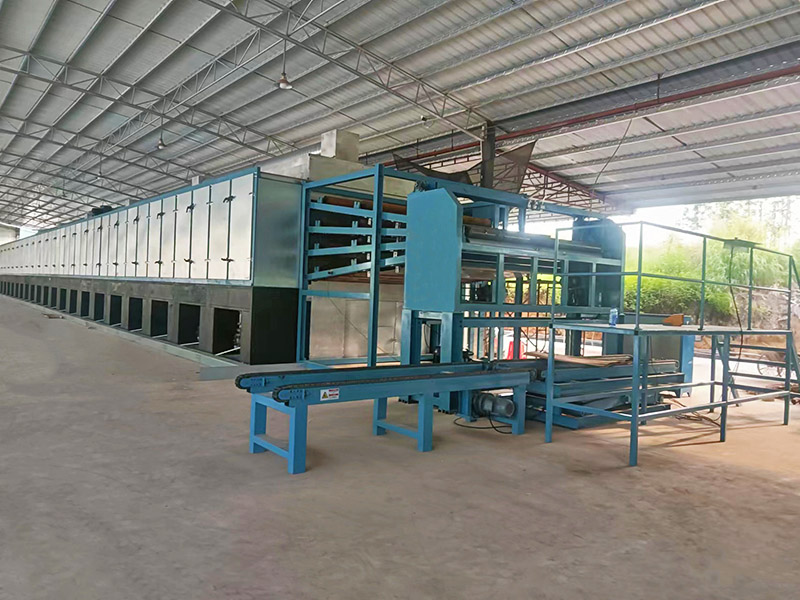In plywood manufacturing, veneer drying is not just a processing step—it is a foundation that determines the final product’s strength, durability, and performance. This article explores the critical role of veneer drying and provides effective strategies for process optimization to help manufacturers achieve high-quality, cost-effective, and eco-friendly production.
1. Impact on Bonding Strength
Excessive moisture results in poor gluing and delamination, while overly dry veneers may crack and absorb adhesive unevenly. Ideal moisture content for gluing is between 8% and 12%. Uniform moisture distribution is crucial for ensuring bonding quality and surface flatness.
2. Key Drying Process Controls
Temperature Zones: Multi-zone drying (high-temp, mid-temp, and cooling sections) prevents scorching or cracking.
Air Volume Control: Airflow must adapt to veneer thickness and initial moisture to ensure even drying.
Conveyor Speed: Variable frequency drives adjust conveyor speed in real-time based on humidity readings, ensuring optimal drying duration.
3. Balancing Energy and Efficiency
Drying is an energy-intensive step. Using heat recovery units, frequency-controlled fans, and intelligent control systems can reduce energy consumption by over 15%. Proper veneer feeding and uniform loading also significantly enhance thermal efficiency.
4. Automation and Digital Upgrades
Modern factories are increasingly equipped with PLC controls, touchscreen interfaces, and online moisture detection for real-time monitoring. Advanced systems can even integrate with MES platforms for data analytics and process improvement.

Copyright By © Shandong Shine Machinery Co.,Ltd